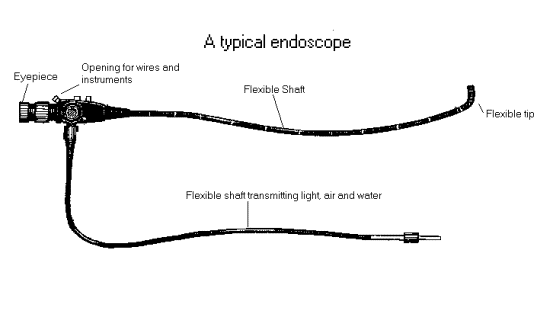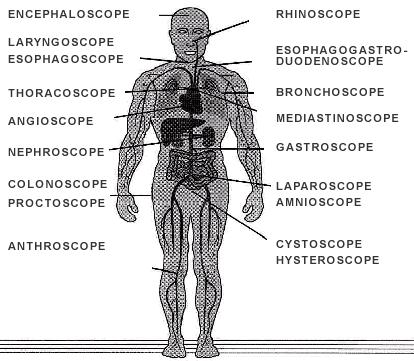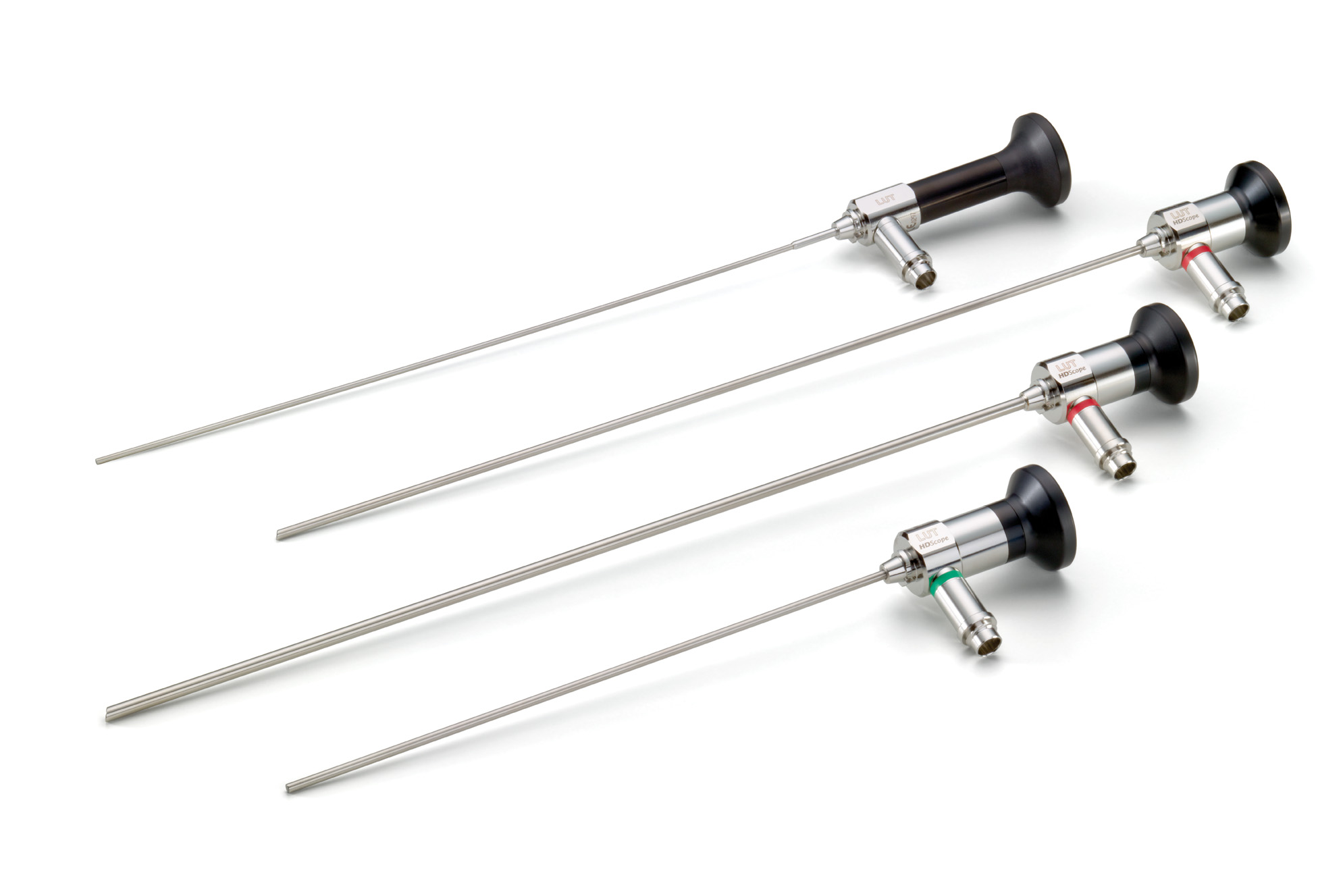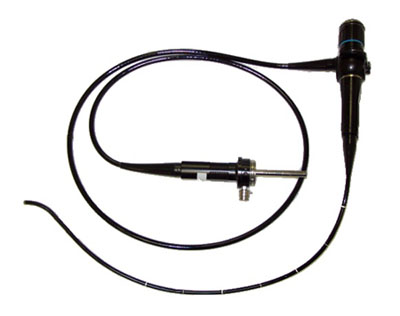
 |
Upload | Sign in |
|---|
Endoscopy is a nonsurgical procedure that involves examining the inside of a person’s body using an endoscope.
An endoscope is a medical device consisting of a long, thin, flexible or rigid tube with a light and camera attached to it. Endoscopy is a minimally invasive diagnostic medical procedure. It is used to examine the interior surfaces of an organ or tissue.
An endoscopy is often used to confirm a diagnosis when other devices, such as an MRI, X-ray, or CT scan are considered inappropriate.
An endoscopy is often carried out to find out the degree of problems a known condition may have caused. The endoscopy, in these cases, may significantly contribute towards the doctor's decision on the best treatment for the patient.

When is an endoscopy used?
To confirm a diagnosis:
An endoscopy is often used to confirm a diagnosis when other devices, such as an MRI, X-ray, or CT scan are considered inappropriate.
An endoscopy is often carried out to find out the degree of problems a known condition may have caused. The endoscopy, in these cases, may significantly contribute towards the doctor's decision on the best treatment for the patient.
Biopsies:
They are used for biopsies - taking samples of tissue to find out whether it is cancerous. Thanks to an endoscope, biopsies of the intestines or lungs can be done without the need for major surgery.
Surgery:
Some surgical procedures can be carried out with a modified endoscope, such as the removal of the gallbladder, tying and sealing the fallopian tubes, and taking out small tumors and foreign objects from the lungs or digestive system.
Types of endoscopes:

ENCEPHALOSCOPE: The encephaloscope is used for examining cavities in the brain.
LARYNGOSCOPE: The laryngoscope is used to examine the larynx, the sphincter at the entrance into the trachea. ESOPHAGOSCOPE: The esophagoscope is used to examine the inside of the esophagus.
THORACOSCOPE: The thoracoscope is an endoscope for examining the pleural cavity through an intercostal space.
ANGIOSCOPE: The angioscope is used to observe blood vessels. It is normally a very narrow (eg 0.5mm) flexible fiber endoscope. The image transfer is usually accomplished with fused silica image conduit with outer diameter of 0.5mm or even 0.35mm. The objective lens system is by necessity of small size.
NEPHROSCOPE: The nephroscope is used in the examination of the kidneys.
COLONOSCOPE: The colonoscope is used to examine the lower part of the bowel.
PROCTOSCOPE: The proctoscope is a speculum for inspecting the rectum.
ARTHROSCOPE: The arthroscope is an endoscope for examining the interior of a joint. The most common arthroscope by far has a 4mm diameter with a 30 degree direction-of-view and is used for diagnosing and treating knee problems. Arthroscopes are rigid devices made up of a stack of optical lenses. The arthroscope eyepiece is normally interfaced with a video camera.
RHINOSCOPE: The rhinoscope is a speculum used in nasal examinations.
ESOPHAGOSCOPE: The esophagoscope is used for examining the passage extending from the pharynx to the stomach.
BRONCHOSCOPE: The bronchoscope is a device for examining the interior of the bronchi.
MEDIASTINOSCOPE: The mediastinoscope is used to examine the mediastinum whcih is the mass of tissues and organs separating the two lungs. This includes the heart and its large vessels, the trachea, the esophagus, etc.
GASTROSCOPE: The gastroscope is an endoscope for inspecting the interior of the stomach.
LAPAROSCOPE: The laparoscope is used to examine the peritoneal cavity and is the most common endoscope utilized by the general surgeon. The most common laparoscope is a rigid unit 10mm in diameter with approximately 300 insertion depth.
AMNIOSCOPE: The amnioscope is used to examine the fetus through the cervical canal before the membrane is broken.
CYSTOSCOPE: The cystoscope is used for examining the urinary tract. It is similar optically to the arthroscope but has a longer insertion depth.
HYSTEROSCOPE: The hysteroscope is an endoscope used to examine the canal of the uterine cervix and the uterine cavity.
Common Types of Endoscopes and Typical Uses
Rigid Endoscopes:
Consisting of a metal tube containing a series of lenses, fiber optics or video chips for image transmission and fiber optic bundles to deliver light, rigid endoscopes offer the best image quality and resolution of all endoscope types. A working channel found in some scopes allows instruments to be passed through so surgeons can work in real-time. Rigid endoscopes are commonly used in urology, gynecology, ENT, arthroscopy, endoscopic spine surgery and general surgery.

Definition of Rigid Endoscopes:
For those who are not familiar with rigid endoscopes, they are small tubular telescopes that allow physicians to look inside joints and body cavities that otherwise could only be examined through a more invasive procedure. These rigid scopes work very well in conjunction with a camera system, so surgeons can view a greatly magnified image of the affected area.
Nowadays, many brand-name companies make rigid endoscopes in different models, for all kinds of surgical needs for both humans and animals. Commonly, rigid endoscopes incorporate a convex glass lens system, in which the small glass lenses are separated by large air spaces.
Uses of Rigid Endoscopes:
Minimally invasive procedures have revolutionized modern medicine, and the use of rigid endoscopes for many diagnoses and procedures has helped thousands of patients around the world. A rigid endoscope is used in procedures such as:
• Exploration and biopsy of the abdomen (in organs such as the liver, prostate, pancreas, lymph nodes, kidney, small intestines, and others)
• Examination of the thorax and chest
• Biopsy for diagnosis on cancer patients (detection and staging)
• Surgery or exploration of the joints (arthroscopy)
• Endoscopic examination and biopsies of organs such as urinary bladder, nose, and ears
Flexible Endoscopes:
The flexible endoscope is more agile than the rigid endoscope, allowing the user to navigate hard-to-reach areas by controlling the directional movement of the scope’s distal end. Since the lenses consist of flexible fibers, the image delivered is not as crisp and defined as with a rigid endoscope.

Common areas of use include: bronchoscopy, colonoscopy and viewing of the upper gastroenterological systems.
What’s the difference between Rigid and flexible endoscopes:?
Both types of endoscopes are used for the same purposes: to look inside the human or animal body for medical reasons, and also to look inside delicate engineering and mechanical equipment.
The main difference between both scopes is the way they are made.
The first one is mainly composed by tubular telescope, which has no bending capacity. A flexible scope is the total opposite. It is a long tube, a one-piece instrument that once inside of a body cavity has limited bending capability, offering an ample view of the cavity that’s being explored.
There are two kinds of flexible endoscopes:
• Fiberoptic endoscopes: These have an eyepiece lens that allows the image to be viewed directly or through a camera mounted on the endoscope
• Videoscopes: This kind of endoscope is the response of modern technology to medicine. With the use of a video chip, images inside of the body are transmitted directly to a monitor, allowing a clear view of the area of study
The effectiveness of these flexible endoscopes relies on the possibility to access areas deep inside the body with much less invasiveness than surgical approaches. That’s why flexible endoscopes are being used for exploring biopsies of delicate areas of the body with systems such as:
• Esophagoscopes
• Nasolaryngoscopes
• Ophthalmoendoscopes
• Colonoscopes
Parts of a flexible endoscope
Flexible scopes are mainly composed of four distinctive parts:
1. Insertion Tube
2. Control body
3. Bending section located at the distal tip of the insertion tube
4. Light-guide connector unit
All of these parts work in combination with some peripherals (such as light sources, video processors, cleaning brushes, among others) for diagnostic or treatment procedures. The images or samples taken during an endoscopy can save lives and also allow researchers to gather a deeper, closer knowledge of the human or animal body.
Both types of scopes are also used outside the medical field in technical areas such as automotive technology, architecture, building inspection and many other fields. Current flexible endoscopes may offer a built-in chip at the distal end of the flexible endoscope. Flexible endoscopes with built-in video chips provide the best visualization possible.
blog comments powered by Disqus